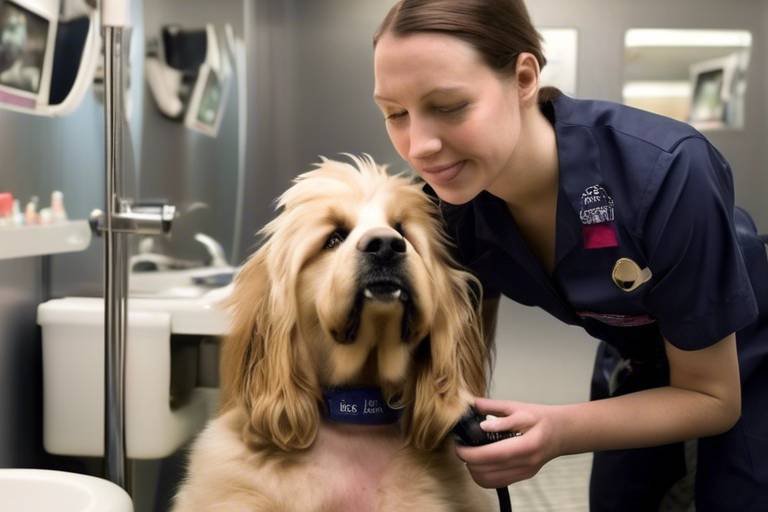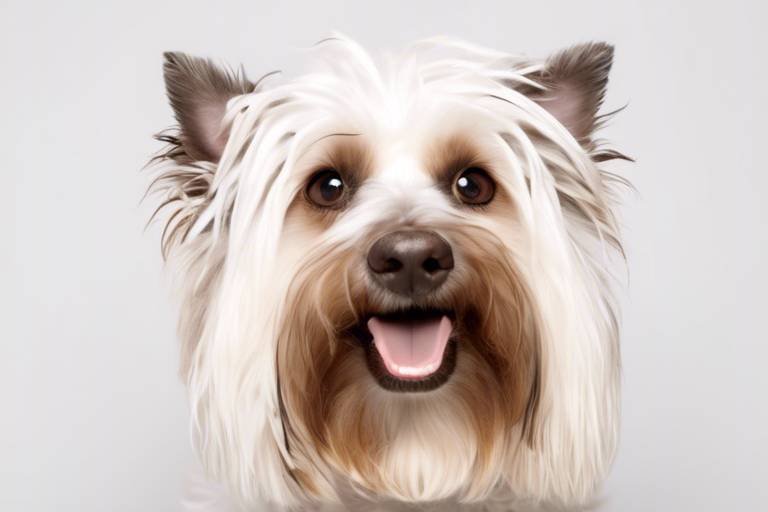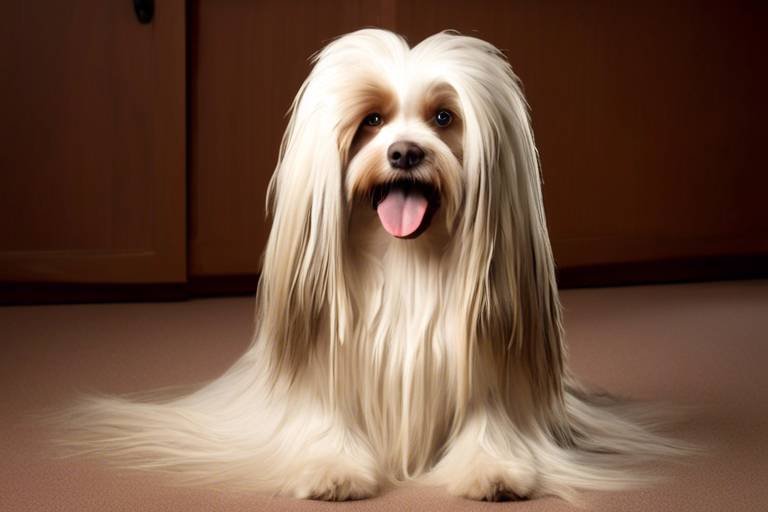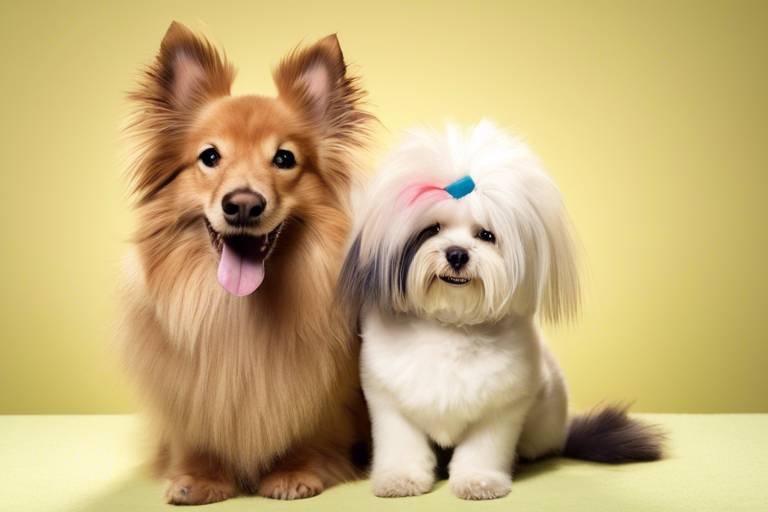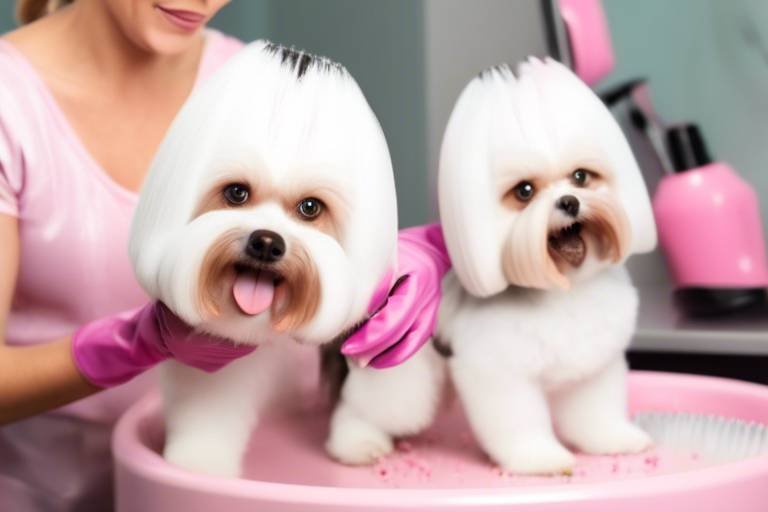How to Identify Signs of Pain During Grooming
Grooming your beloved pet is an essential part of their care routine, but it can sometimes be a source of discomfort for them. Just like us, pets can experience pain or anxiety during grooming sessions, and it’s crucial for owners to be vigilant in recognizing the signs. Understanding how to identify these indicators not only helps in ensuring a more pleasant grooming experience but also strengthens the bond between you and your furry friend. So, how can you tell if your pet is in pain while you’re trying to keep them looking their best? Let’s dive into the world of animal behavior and explore the subtle hints your pet may be giving you.
Before we can effectively identify signs of pain, it’s essential to grasp the normal behavior of our pets. Each animal has its unique personality, and their reactions during grooming can vary widely. For example, while some pets may sit calmly and enjoy the process, others may become restless or agitated. Recognizing these typical behaviors is the first step in spotting any deviations that could indicate discomfort. When a pet suddenly starts to squirm, pull away, or even try to escape during grooming, it could be a clear sign that something is amiss. It’s like watching a friend who usually loves roller coasters suddenly turn pale at the thought of the ride—something has changed, and it’s up to you to find out what it is.
When pets are in pain, they often communicate through various signs. It’s essential to be observant and attentive to these indicators, as they can range from vocalizations to body language and behavioral changes. Here are some common signs to watch for:
- Vocalizations: Whining, growling, or yelping can all indicate discomfort.
- Body Language: Postures like cowering, stiffening, or hiding can suggest pain.
- Behavioral Changes: Aggression or withdrawal during grooming may signal distress.
Being aware of these signs can help you gauge your pet’s comfort level and adjust your grooming techniques accordingly.
One of the most apparent signs that your pet might be in pain is through their vocalizations. Pets often express their discomfort verbally, and understanding these sounds can provide significant insight. For instance, a soft whine might indicate mild discomfort, while a sharp yelp can suggest a more intense pain. Growling, which is often associated with aggression, can also be a sign that your pet feels threatened or is in pain. It’s essential to take these vocalizations seriously; they are your pet’s way of communicating their distress. Imagine if someone was tugging at your hair—wouldn’t you want to shout out too?
Body language is another critical component in identifying pain in pets. A relaxed pet will typically have a loose body posture, wagging tail, and bright eyes. In contrast, signs of discomfort may include:
- Cowering: If your pet is trying to make themselves smaller or is backing away, they may be feeling threatened.
- Stiffening: A tense body posture can indicate that your pet is bracing against pain.
- Averting Eyes: If your pet avoids eye contact, it may be a sign that they are uncomfortable.
Learning to read these signals can be as important as knowing how to use grooming tools effectively. Think of it as learning a new language; once you understand the signs, communication becomes much easier.
Behavioral changes can be significant indicators of pain. If your usually friendly pet becomes aggressive or tries to hide when it’s time for grooming, it may be a sign of discomfort. Some pets may even exhibit signs of anxiety, such as excessive panting or pacing. These changes can be subtle but are crucial to notice. Just like a friend who suddenly becomes distant, these changes can indicate that something isn’t right. Recognizing these shifts in behavior allows you to adapt your grooming approach or consult a veterinarian if necessary.
The tools and techniques used during grooming can significantly impact your pet's comfort level. Some brushes or clippers may be too harsh for sensitive skin, leading to pain or discomfort. It’s essential to choose the right tools that suit your pet’s coat type and sensitivity. For instance, a slicker brush may be effective for some breeds but could cause discomfort for others. Always opt for tools designed specifically for your pet's needs, and consider consulting your veterinarian or a professional groomer for recommendations.
If you suspect your pet is in pain during grooming, knowing when to consult a veterinarian is essential. It’s better to be safe than sorry, and a professional can help determine if there is an underlying issue that needs to be addressed. Look for serious symptoms such as:
- Persistent vocalizations despite gentle handling.
- Visible injuries or swelling.
- Changes in appetite or lethargy.
These signs should prompt immediate veterinary attention, as they could indicate a more serious condition that requires treatment.
Some symptoms may indicate a more serious underlying issue. If your pet shows any of the following signs, it’s crucial to seek veterinary assistance:
- Severe or prolonged vocalizations during grooming.
- Refusal to eat or drink.
- Excessive licking or biting at a specific area.
These symptoms can be a red flag that something more serious is going on, and prompt action can make all the difference.
Preventing pain during grooming is key to a positive experience for both you and your pet. Here are some strategies to minimize discomfort:
- Gradual Desensitization: Introduce grooming tools slowly to help your pet get used to them.
- Comfortable Environment: Ensure your grooming space is calm and stress-free.
- Frequent Breaks: Allow your pet to take breaks during grooming to reduce anxiety.
By taking these preventive measures, you can create a more enjoyable grooming experience that keeps your pet happy and healthy.
Q: How can I tell if my pet is in pain during grooming?
A: Look for signs such as vocalizations, changes in body language, and behavioral shifts. If your pet seems restless or tries to escape, they may be uncomfortable.
Q: What should I do if my pet shows signs of pain?
A: If you notice persistent signs of pain, consult your veterinarian for advice. They can help identify any underlying issues and recommend appropriate treatments.
Q: Are there grooming tools that are more comfortable for pets?
A: Yes! Look for tools designed for your pet's specific coat type and sensitivity. Soft brushes and quiet clippers can help minimize discomfort during grooming.
Q: How often should I groom my pet?
A: Grooming frequency depends on your pet's breed and coat type. Long-haired breeds may require more frequent grooming than short-haired ones. Regular grooming helps prevent matting and keeps your pet comfortable.

Understanding Animal Behavior
Understanding your pet's behavior is crucial when it comes to grooming. Just like us, pets have their own unique ways of expressing discomfort or distress. When you take your furry friend for a grooming session, it’s essential to pay attention to their reactions. Animals can’t speak our language, but they communicate through body language, vocalizations, and behavior. By tuning into these signals, you can ensure that grooming remains a positive experience for both you and your pet.
During grooming, pets may display a range of normal behaviors that can help you gauge their comfort level. For instance, a relaxed pet may sit calmly or even enjoy the brushing, wagging their tail or leaning into the grooming tool. On the other hand, if your pet starts to squirm, pull away, or show signs of agitation, it could be a red flag indicating discomfort. It's like trying to read a book in a foreign language; once you understand the symbols, the story becomes clearer.
One important aspect of understanding animal behavior is recognizing that every pet is different. Some may tolerate grooming well, while others might be more sensitive. For example, a dog that has been groomed regularly from a young age may be more accustomed to the process, while a cat that has never experienced it might be more anxious. Here’s a quick breakdown of typical behaviors you might observe:
- Relaxed Posture: Loose body, wagging tail, and purring (for cats) indicate comfort.
- Signs of Stress: Tense body, ears pinned back, and hiding can signal discomfort.
- Vocalizations: Whining or growling may indicate pain or distress.
By observing these behaviors closely, you can tailor your grooming approach to suit your pet's needs. For instance, if you notice that your dog becomes anxious when you use a specific brush, it might be worth trying a different tool. Understanding these nuances not only helps in making grooming a more enjoyable experience but also strengthens the bond between you and your pet. Remember, the goal is to create a calm and safe environment where your pet feels secure and cared for.
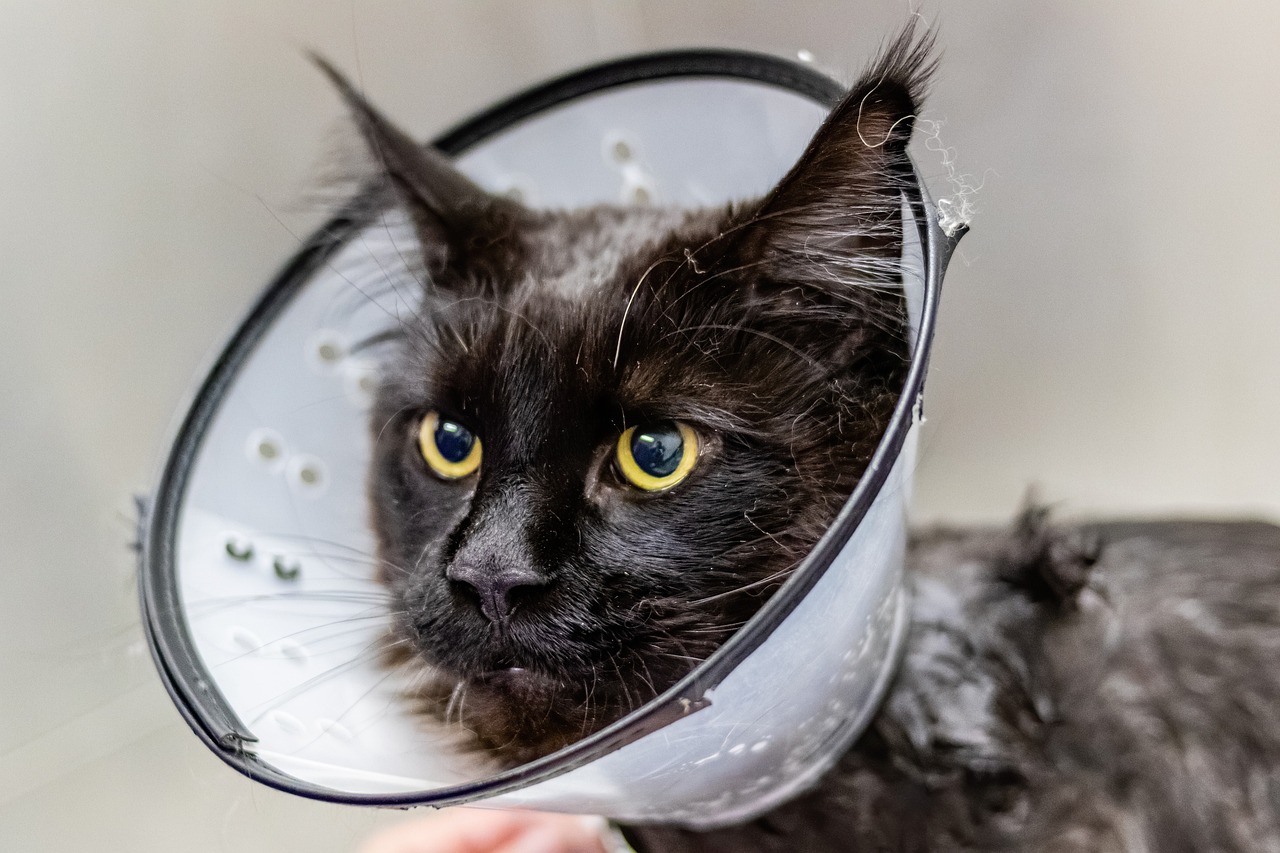
Common Signs of Pain
When it comes to our furry friends, understanding their feelings is crucial. Pets, just like humans, can experience pain, and they often communicate this discomfort in various ways. Recognizing these signs can make all the difference in ensuring your pet's well-being during grooming sessions. So, how do you know if your pet is in pain? Let's dive into the most common indicators that might suggest your beloved companion is feeling uncomfortable.
First off, vocalizations are a primary way pets express their feelings. If your dog or cat starts whining, growling, or yelping during grooming, it’s a clear signal that something isn’t right. These vocal sounds can range from soft whines to sharp yelps, and each can indicate different levels of discomfort. For instance, a low growl might suggest irritation, while a high-pitched yelp could indicate acute pain. It’s essential to pay attention to the context of these sounds, as they can help you gauge the severity of your pet's distress.
Next, let’s talk about body language. Pets are masters of non-verbal communication, and their body language can tell you a lot about how they feel. If your pet is cowering, hiding, or trying to escape during grooming, these behaviors are significant red flags. Additionally, if you notice your pet stiffening up or holding their body in an unusual posture, they may be trying to signal that they are in pain. For example, a dog that usually enjoys being brushed but suddenly flattens its ears back or tucks its tail could be experiencing discomfort.
Another aspect to consider is behavioral changes. Has your usually friendly dog turned aggressive during grooming? Or perhaps your cat, who loves to be petted, has started to hide away? These sudden shifts in behavior can indicate that your pet is feeling pain. Sometimes, pets may withdraw from social interactions or become unusually quiet when they're hurting. It’s important to observe these changes closely, as they can provide valuable insights into your pet's emotional and physical state.
To help you further recognize these signs, here’s a quick summary of common indicators of pain in pets:
- Vocalizations: Whining, growling, yelping
- Body Language: Cowering, stiffening, unusual postures
- Behavioral Changes: Aggression, withdrawal, avoidance
Understanding these signs can significantly improve your pet's grooming experience. If you notice any of these indicators, it’s essential to pause the grooming process and reassess the situation. Sometimes, a simple adjustment in technique or tool can make a world of difference. Remember, the goal is to create a positive and stress-free environment for your furry friend.
Q: How can I tell if my pet is in pain during grooming?
A: Look for vocalizations like whining or growling, changes in body language such as cowering or stiffening, and any unusual behavioral changes like aggression or withdrawal.
Q: What should I do if my pet shows signs of pain?
A: Stop grooming immediately and assess the situation. Consider changing your grooming tools or techniques, and consult your veterinarian if the signs persist.
Q: Can grooming tools cause pain?
A: Yes, certain grooming tools can cause discomfort if they are too harsh or if your pet is not accustomed to them. Always choose tools that are appropriate for your pet's coat type and sensitivity.
Q: Is it normal for pets to dislike grooming?
A: While some pets may be more sensitive than others, a strong dislike of grooming can indicate discomfort or pain. It’s important to address these feelings to ensure a positive grooming experience.
Vocalizations
When it comes to our furry friends, vocalizations can be one of the most telling signs of discomfort or pain. Just like humans might express their feelings through words or sounds, pets communicate their distress in a variety of ways. It's essential for pet owners to tune into these vocal signals to ensure their beloved companions are not suffering in silence. For instance, if you notice your pet making unusual noises during grooming, it’s time to pay attention.
Common vocalizations that may indicate pain include:
- Whining: A high-pitched whine can suggest that a pet is feeling anxious or in discomfort. If your dog or cat starts to whine when you brush them, it might be a sign that they are not enjoying the process.
- Growling: Growling is often a warning sign. If your pet growls during grooming, it could mean they are feeling threatened or are in pain. This is particularly common in pets that may have had negative experiences with grooming in the past.
- Yelping: A sudden yelp or yowling can be a clear indicator of pain. If your pet yelps when you touch a specific area, it’s crucial to stop immediately and assess the situation.
Understanding these vocalizations can make a significant difference in how you approach grooming. For example, if your dog growls when you reach for their paws, it might be time to rethink your technique or even consider consulting a professional groomer who can help ease your pet's anxiety. Remember, grooming should be a positive experience, not a painful one!
Moreover, it's important to note that not all vocalizations are created equal. Some pets are naturally more vocal than others, and their sounds might not always indicate pain. For instance, a playful bark or a soft meow can be a sign of excitement rather than distress. Therefore, it's essential to observe the context in which these sounds occur. Is your pet relaxed, or are they tense and on edge? This distinction can help you decipher whether the vocalizations are a cry for help or just part of their personality.
In conclusion, being attuned to your pet's vocalizations during grooming can significantly enhance their comfort and well-being. By recognizing these sounds and understanding their meanings, you can create a more enjoyable grooming experience, ensuring that your furry friend feels safe and cared for. So next time you pick up that brush or clippers, listen closely to what your pet is trying to tell you!
Q: What should I do if my pet growls during grooming?
A: If your pet growls, it’s essential to stop grooming immediately. Assess the situation and consider giving your pet a break or consulting a professional groomer.
Q: Are all vocalizations a sign of pain?
A: Not necessarily. Some pets are naturally vocal, and their sounds may not indicate distress. It's crucial to consider the context and your pet's overall body language.
Q: How can I help my pet feel more comfortable during grooming?
A: Gradual desensitization, positive reinforcement, and creating a calm grooming environment can help your pet feel more at ease.
Body Language
Understanding your pet's body language is crucial when it comes to identifying signs of pain during grooming. Animals communicate a lot through their posture and movements, and being observant can make a significant difference in ensuring your furry friend feels comfortable and safe. For instance, if your dog or cat is cowering, with their body low to the ground, this might indicate fear or discomfort. Similarly, if they are stiffening their body or holding their tail low, it can be a sign that something is bothering them.
Another important aspect to consider is the position of their ears. If your pet's ears are pinned back against their head, this is often a clear indication of stress or pain. On the other hand, relaxed ears that are standing upright typically suggest that your pet is at ease. Additionally, you should pay attention to their eyes; wide, dilated pupils can indicate fear or anxiety, while a relaxed gaze usually means they are feeling good.
Moreover, examine how your pet reacts to touch during grooming. If they flinch away or try to move away from the grooming tool, it’s a strong signal that they may be experiencing discomfort. In some cases, pets might even growl or snarl as a way to communicate their distress. These vocalizations, combined with their body language, provide a clearer picture of their emotional state.
To help you better understand these signs, here’s a quick reference table summarizing common body language indicators of pain in pets:
| Body Language Indicator | Possible Meaning |
|---|---|
| Cowering | Fear or discomfort |
| Stiff body | Tension or pain |
| Pinned ears | Stress or anxiety |
| Wide, dilated pupils | Fear or distress |
| Flinching away from touch | Discomfort or pain |
By keeping an eye on these body language cues, you can better gauge how your pet is feeling during grooming sessions. Remember, your pet relies on you to be their advocate, so being attentive to their non-verbal signals can help create a more positive grooming experience.
- What should I do if my pet shows signs of pain during grooming?
It's essential to stop grooming immediately and assess your pet's condition. If the signs persist, consider consulting a veterinarian. - Can grooming tools cause pain?
Yes, certain grooming tools can be uncomfortable or painful if not used correctly. Always choose the right tools for your pet's coat type and sensitivity. - How can I make grooming more comfortable for my pet?
Gradual desensitization to grooming tools and creating a calm environment can help. Additionally, rewarding your pet with treats can make the experience more positive.
Behavioral Changes
When it comes to our furry friends, they often communicate their feelings through their behavior. during grooming can be a significant indicator of discomfort or pain. For instance, if your pet suddenly becomes aggressive or tries to escape the grooming area, it might be a clear signal that something isn’t right. Imagine a dog that was once playful and relaxed turning into a quivering ball of nerves—this is a classic sign that the grooming process has become overwhelming for them.
Additionally, you might notice your pet withdrawing or becoming unusually quiet. Just like humans, pets can exhibit signs of stress or discomfort by retreating into themselves. If your cat, for example, who usually enjoys being petted, starts to hide or avoids eye contact, it’s time to reassess the grooming situation. These behavioral changes can be subtle yet crucial. Pay attention! A sudden change in your pet's demeanor can be a cry for help, indicating that they are feeling pain or anxiety.
Furthermore, consider how your pet reacts to specific grooming tools. If they show signs of fear when you bring out the clippers or brushes, it might mean they associate these tools with discomfort. You might find them flinching, trying to bite, or even growling when you approach with a brush. It’s essential to note these reactions and adjust your grooming techniques accordingly.
In some cases, pets may also exhibit subtle behavioral changes that can be easily overlooked. For example, a normally active dog may become lethargic or disinterested in play. This shift could indicate that grooming is causing them pain, particularly if it involves pulling on their fur or skin. Keeping a close eye on these changes can help you gauge your pet’s comfort level during grooming sessions. Here’s a quick reference table summarizing common behavioral changes to look out for:
| Behavioral Change | Possible Interpretation |
|---|---|
| Aggression (growling, snapping) | Discomfort or pain |
| Withdrawal (hiding, avoiding contact) | Stress or fear |
| Lethargy (decreased activity) | Possible pain or discomfort |
| Flinching or trying to escape | Fear of grooming tools |
Recognizing these changes is key to ensuring a positive grooming experience for your pet. By being attentive to their behavior, you can adapt your approach and make grooming a more enjoyable process. Remember, grooming should not be a battle; it should be a bonding experience. If you notice any significant behavioral changes, it's crucial to consult with a veterinarian or a professional groomer who can provide guidance tailored to your pet's specific needs.
- What should I do if my pet shows signs of pain during grooming? - If your pet shows discomfort, stop grooming immediately and assess the situation. Consult with a veterinarian if the behavior persists.
- How can I make grooming less stressful for my pet? - Gradually introduce grooming tools and techniques, and create a calm environment to help your pet feel more secure.
- Are there specific grooming tools that are better for sensitive pets? - Yes, look for tools designed for sensitive skin or those that minimize pulling on the fur.
Grooming Tools and Techniques
When it comes to grooming your furry friend, the tools and techniques you use can significantly impact their comfort and overall experience. Just like a chef needs the right knives to create a masterpiece, pet owners need the right grooming tools to keep their pets looking and feeling their best. One of the most common tools is the grooming brush. However, not all brushes are created equal. For instance, a slicker brush is excellent for removing tangles and mats, but it can also be harsh on sensitive skin. Therefore, it's essential to choose a brush that suits your pet's coat type and skin sensitivity.
Additionally, the type of clippers you use can make a world of difference. Some clippers are designed for heavy-duty grooming, while others are made for delicate areas. If your pet has a thick coat, a powerful clipper will be necessary, but be cautious; the vibrations can sometimes cause anxiety. In contrast, quieter clippers are better for anxious pets, providing a more soothing experience. Always remember to introduce these tools gradually to avoid overwhelming your pet.
Moreover, the technique you use while grooming is just as important as the tools themselves. For example, using a gentle touch and being mindful of sensitive areas—like the belly, paws, and tail—can help alleviate discomfort. Positive reinforcement is also key; rewarding your pet with treats or praise during grooming sessions can create a more enjoyable experience. Think of it as a fun bonding activity rather than a chore. Gradually desensitizing your pet to grooming can also be beneficial. Start with short sessions and slowly increase the duration as your pet becomes more comfortable.
In addition to brushes and clippers, other grooming tools like nail clippers and ear cleaners require careful consideration. Nail clippers should be sharp and appropriate for your pet's size to avoid painful accidents. Similarly, ear cleaning tools should be gentle, as the ear canal is sensitive. Always consult your veterinarian for recommendations tailored to your pet's specific needs, ensuring that you’re using the most effective and comfortable tools available.
To sum it all up, the right grooming tools and techniques are vital for a positive grooming experience. By selecting the appropriate tools and employing gentle techniques, you can help your pet feel relaxed and secure during grooming sessions. Remember, a happy pet makes for a happy owner!
- What are the best grooming tools for my pet? The best grooming tools depend on your pet's coat type and sensitivity. Brushes, clippers, and nail trimmers should be chosen based on these factors.
- How can I make grooming less stressful for my pet? Gradual desensitization, positive reinforcement, and choosing the right tools can help make grooming a more enjoyable experience for your pet.
- When should I consult a veterinarian about grooming? If you notice signs of pain during grooming or if your pet shows significant behavioral changes, it's essential to consult a veterinarian for advice.
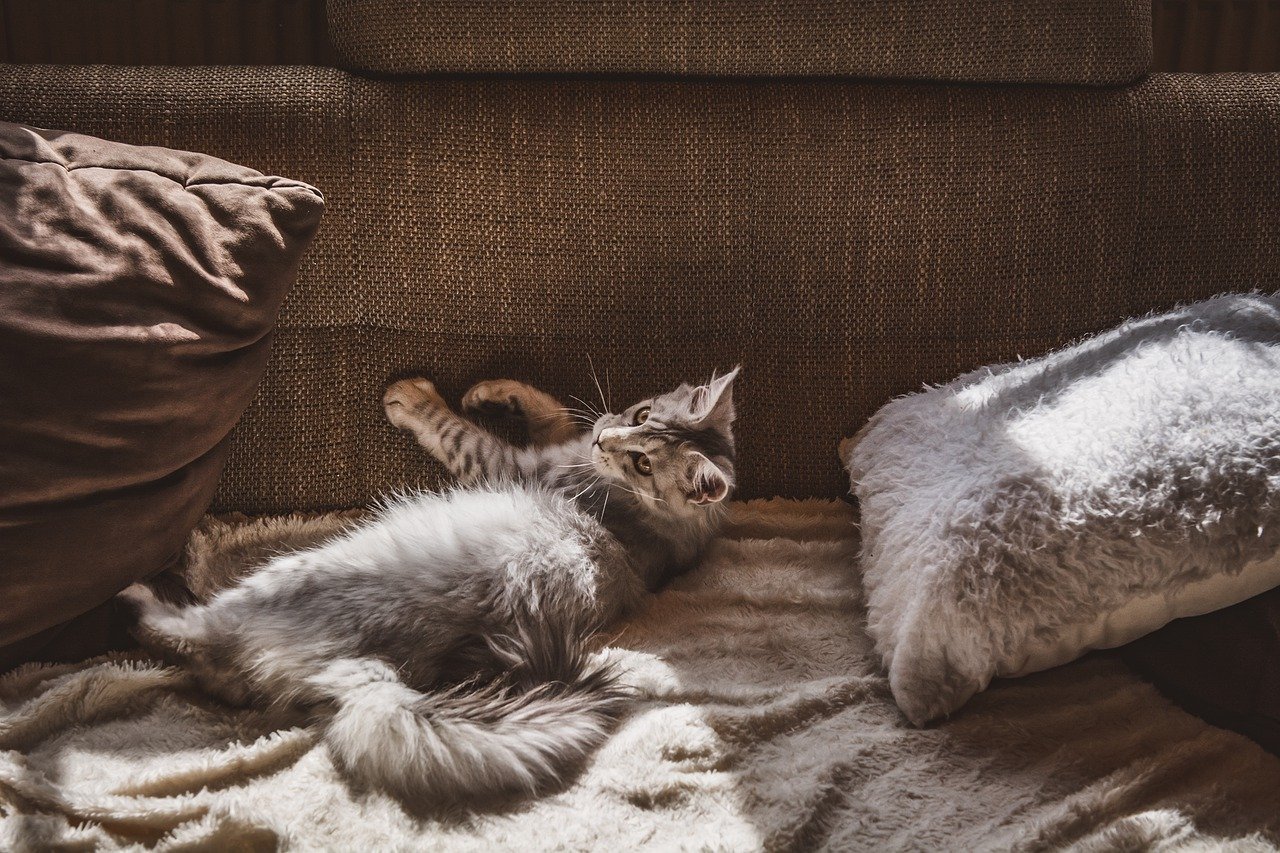
When to Seek Veterinary Help
As a responsible pet owner, it's crucial to be vigilant and recognize when your furry friend needs more than just a gentle grooming session. Sometimes, what seems like a minor discomfort can be a signal of a more serious underlying issue. So, when should you pick up the phone and call your veterinarian? Let's dive into the signs that indicate it's time for professional help.
First and foremost, if your pet exhibits any sudden changes in behavior during grooming—such as aggression, excessive whining, or even attempts to escape—this could be a red flag. Animals are incredibly intuitive, and if they feel something is off, they will often express it in ways we might not immediately understand. For instance, a dog that normally enjoys grooming may suddenly become aggressive or fearful. This drastic change is a clear indication that something is amiss.
Moreover, keep an eye out for physical symptoms that could signal pain or discomfort. If your pet displays any of the following symptoms, it’s time to consult with a veterinarian:
- Persistent vocalizations like yelps or growls
- Visible signs of distress, such as panting or trembling
- Refusal to eat or drink
- Increased sensitivity to touch, especially in areas that are typically groomed
- Swelling, redness, or any unusual discharge from the skin
Another crucial aspect to consider is the duration of the discomfort. If your pet seems to be in pain for more than a couple of hours after grooming, it's advisable to seek veterinary advice. Prolonged pain might indicate an injury or a more serious condition that requires immediate attention. Remember, your pet can’t tell you what’s wrong, so being proactive is essential.
In addition to behavioral and physical signs, it’s also important to monitor your pet’s overall health. If you notice any changes in their usual habits—like a sudden decrease in energy, changes in bathroom habits, or unusual weight loss—these can all be symptoms of underlying health issues that need veterinary evaluation.
Ultimately, trusting your instincts is key. If something feels off, it’s better to err on the side of caution. Your veterinarian can provide a thorough examination and help determine if there’s a serious issue that needs addressing. Remember, early intervention can make a significant difference in your pet's health and well-being.
Identifying serious symptoms can be daunting, but being informed can empower you as a pet owner. Some critical signs that warrant immediate veterinary attention include:
- Severe difficulty breathing
- Uncontrollable bleeding
- Signs of shock, such as a weak pulse or lethargy
- Inability to stand or walk
If you observe any of these symptoms, do not hesitate to contact your veterinarian or an emergency animal clinic. Your quick response can be vital in ensuring your pet receives the care they need.
Preventing pain during grooming is essential for a positive experience. By adopting a few simple strategies, you can help minimize discomfort for your pet. Gradual desensitization to grooming tools and techniques can make a world of difference. Start by introducing your pet to the tools you plan to use, allowing them to sniff and explore before the actual grooming process begins. Additionally, choosing a calm and comfortable environment for grooming can help your pet feel more at ease.
Q: How can I tell if my pet is in pain during grooming?
A: Look for signs such as vocalizations, changes in behavior, and physical symptoms like swelling or sensitivity to touch.
Q: What should I do if my pet shows aggression during grooming?
A: It's important to stop grooming immediately and assess the situation. Consider consulting a veterinarian or a professional groomer for advice.
Q: Are there specific grooming tools that are better for sensitive pets?
A: Yes, using tools designed for sensitive skin or pets with specific grooming needs can help minimize discomfort. Always consult with a professional if you're unsure.
Q: When should I seek veterinary help after grooming?
A: If your pet shows prolonged signs of discomfort or any serious symptoms, it's best to consult your veterinarian as soon as possible.
Recognizing Serious Symptoms
When it comes to our beloved pets, understanding their health and well-being is paramount. During grooming sessions, it's crucial to be vigilant and recognize any serious symptoms that may indicate underlying issues. If your furry friend suddenly becomes unusually aggressive or tries to escape during grooming, it might not just be a case of being a little skittish; it could be a sign of significant discomfort or pain. Pay special attention to changes in their normal behavior, as these can often be the first indicators that something is not quite right.
For instance, if your pet is typically calm and friendly but suddenly starts growling or snapping, this could signal that they are experiencing severe pain. Additionally, look out for physical signs such as:
- Excessive panting - This can indicate stress or pain.
- Shaking or trembling - Often a sign of fear or discomfort.
- Loss of appetite - If your pet refuses food or treats, it could indicate pain.
- Changes in posture - Hunched backs or a reluctance to move can be serious red flags.
If you notice any of these symptoms, it's essential to take them seriously. Sometimes, the signs can be subtle, like a slight change in their usual behavior. For example, if your dog usually enjoys being brushed but suddenly pulls away or hides when you bring out the grooming tools, it could indicate that they associate grooming with pain. This is a classic case of learned behavior, where past negative experiences can lead to anxiety during grooming sessions.
Moreover, keep an eye out for any signs of swelling, redness, or abnormal growths on your pet's skin, as these could indicate infections or other serious issues that require immediate veterinary attention. Remember, the sooner you address any concerning symptoms, the better the outcome for your pet. If you're ever in doubt, it's always best to consult with a veterinarian who can provide professional insights and care tailored to your pet's needs.
In summary, recognizing serious symptoms during grooming is essential for maintaining your pet's health. By being observant and proactive, you can ensure that your furry companion remains comfortable and happy during grooming sessions.
Here are some common questions pet owners have regarding grooming and recognizing signs of pain:
- What should I do if my pet shows signs of pain during grooming? - If you notice any signs of pain, stop grooming immediately and consult your veterinarian for advice.
- How can I make grooming less stressful for my pet? - Gradual desensitization, using positive reinforcement, and choosing the right tools can help.
- Are there specific breeds that are more prone to pain during grooming? - Yes, some breeds with sensitive skin or specific coat types may experience more discomfort.
Preventive Measures
When it comes to grooming your beloved pet, prevention is always better than cure. By taking proactive steps, you can minimize the chances of your furry friend experiencing discomfort or pain during grooming sessions. One effective strategy is to gradually desensitize your pet to the grooming process. Start by introducing them to the grooming tools without actually using them. Let them sniff the brushes and clippers, and reward them with treats to create positive associations. This way, when it’s time for grooming, your pet will feel more at ease.
Another essential aspect is to choose the right grooming environment. Ensure that the area is calm and free from distractions. A quiet space can significantly reduce your pet’s anxiety. You might also consider using non-slip mats to help them feel secure, especially if they are a bit wobbly on their feet. Comfort is key, and a cozy environment can make all the difference.
It's also crucial to select the appropriate grooming tools for your pet's specific needs. For instance, using a soft-bristled brush for sensitive skin or a comb designed for their coat type can prevent unnecessary tugging and pulling. Additionally, consider the size of the grooming tools; larger tools can be intimidating for small pets. Always opt for tools that are designed specifically for your pet’s breed and coat type to ensure a smoother grooming experience.
Lastly, monitor your pet's reactions throughout the grooming process. If you notice signs of discomfort, such as flinching or attempting to escape, take a step back. It’s essential to be patient and allow your pet to acclimate at their own pace. Remember, grooming should be a bonding experience, not a battle. By implementing these preventive measures, you can transform grooming from a dreaded chore into a pleasant routine for both you and your pet.
- How often should I groom my pet? The frequency of grooming depends on your pet's breed and coat type. Long-haired pets may need grooming every few days, while short-haired pets might require less frequent grooming.
- What should I do if my pet shows signs of pain during grooming? If your pet shows signs of pain, stop grooming immediately and assess the situation. If the signs persist, consult your veterinarian for advice.
- Can I groom my pet at home? Yes, many pet owners successfully groom their pets at home. However, it’s essential to educate yourself about the proper techniques and tools to use.
- What are some signs that my pet enjoys grooming? If your pet is relaxed, leans into the brush, or even falls asleep during grooming, these are good signs that they are enjoying the experience.
Frequently Asked Questions
- What are the common signs that my pet may be in pain during grooming?
Pets can exhibit a variety of signs when they are in pain during grooming. Look out for vocalizations like whining or growling, changes in body language such as cowering or stiffening, and behavioral changes like aggression or withdrawal. Recognizing these signs can help you address your pet's discomfort promptly.
- How can I tell if my pet is stressed during grooming?
Stress in pets can manifest in several ways. If your pet is panting excessively, trying to escape, or showing a lack of interest in treats or toys, these are clear indicators of stress. Additionally, if they are constantly looking around or have dilated pupils, it’s time to reconsider your grooming approach.
- What grooming tools should I avoid to prevent pain?
Some grooming tools can cause discomfort if not used correctly. Avoid tools with sharp edges or those that pull on the fur. Opt for brushes and clippers designed specifically for your pet's coat type, and always ensure they are well-maintained to minimize any potential pain.
- When should I consult a veterinarian about my pet's grooming pain?
If you notice persistent signs of pain or distress during grooming, it’s crucial to consult a veterinarian. Serious symptoms, such as excessive vocalization, visible injuries, or behavioral changes that last beyond grooming sessions, warrant immediate professional advice.
- What preventive measures can I take to minimize my pet's discomfort during grooming?
To prevent discomfort, consider gradual desensitization techniques. Start by introducing grooming tools slowly and allow your pet to get accustomed to the process. Create a calm environment and use positive reinforcement, such as treats and praise, to make grooming a more enjoyable experience.



